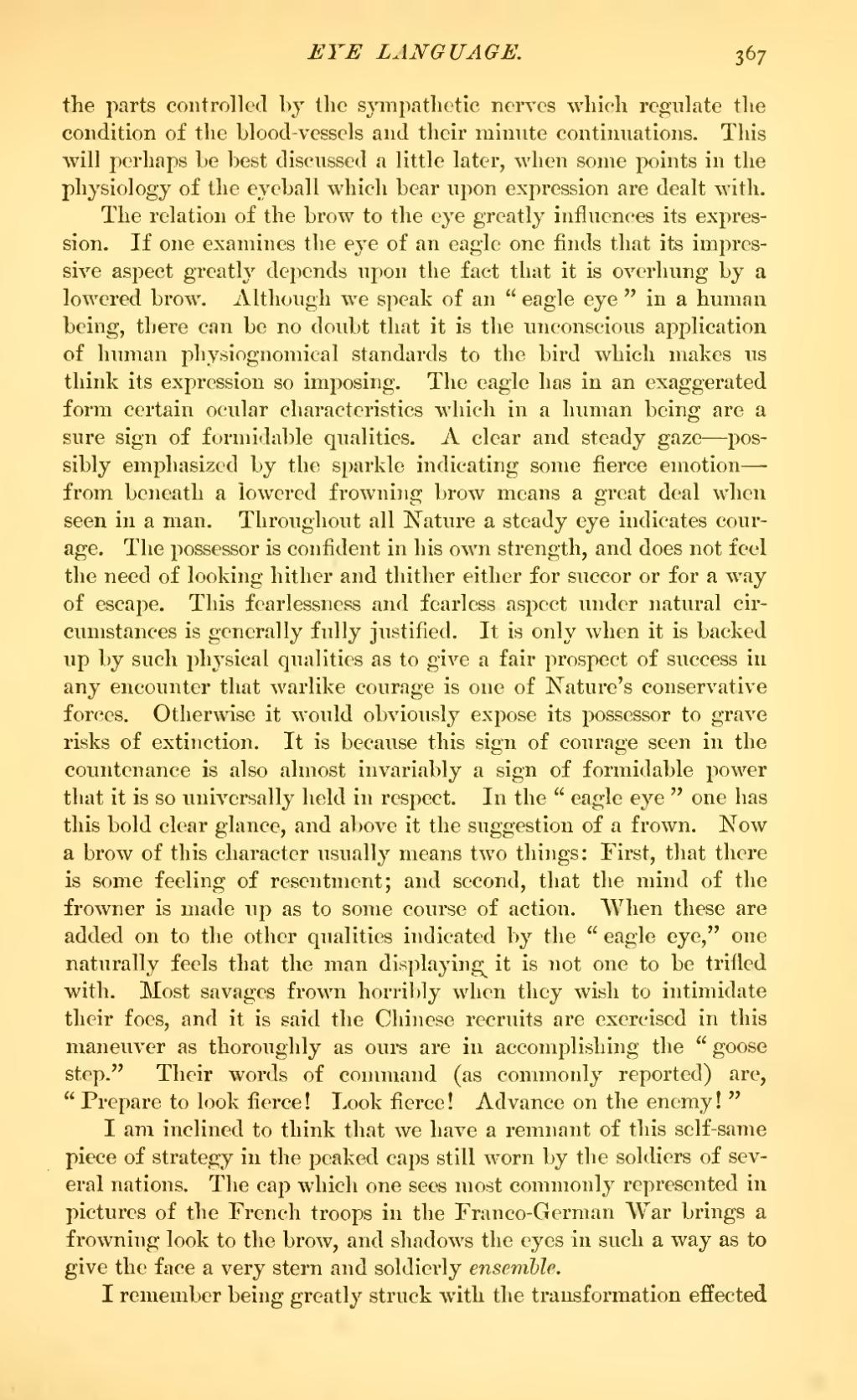the parts controlled by the sympathetic nerves which regulate the condition of the blood-vessels and their minute continuations. This will perhaps be best discussed a little later, when some points in the physiology of the eyeball which bear upon expression are dealt with.
The relation of the brow to the eye greatly influences its expression. If one examines the eye of an eagle one finds that its impressive aspect greatly depends upon the fact that it is overhung by a lowered brow. Although we speak of an "eagle eye" in a human being, there can be no doubt that it is the unconscious application of human physiognomical standards to the bird which makes us think its expression so imposing. The eagle has in an exaggerated form certain ocular characteristics which in a human being are a sure sign of formidable qualities. A clear and steady gaze—possibly emphasized by the sparkle indicating some fierce emotion—from beneath a lowered frowning brow means a great deal when seen in a man. Throughout all Nature a steady eye indicates courage. The possessor is confident in his own strength, and does not feel the need of looking hither and thither either for succor or for a way of escape. This fearlessness and fearless aspect under natural circumstances is generally fully justified. It is only when it is backed up by such physical qualities as to give a fair prospect of success in any encounter that warlike courage is one of Nature's conservative forces. Otherwise it would obviously expose its possessor to grave risks of extinction. It is because this sign of courage seen in the countenance is also almost invariably a sign of formidable power that it is so universally held in respect. In the "eagle eye" one has this bold clear glance, and above it the suggestion of a frown. Now a brow of this character usually means two things: First, that there is some feeling of resentment; and second, that the mind of the frowner is made up as to some course of action. When these are added on to the other qualities indicated by the "eagle eye," one naturally feels that the man displaying it is not one to be trifled with. Most savages frown horribly when they wish to intimidate their foes, and it is said the Chinese recruits are exercised in this maneuver as thoroughly as ours are in accomplishing the "goose step." Their words of command (as commonly reported) are, "Prepare to look fierce! Look fierce! Advance on the enemy!"
I am inclined to think that we have a remnant of this self-same piece of strategy in the peaked caps still worn by the soldiers of several nations. The cap which one sees most commonly represented in pictures of the French troops in the Franco-German War brings a frowning look to the brow, and shadows the eyes in such a way as to give the face a very stern and soldierly ensemble.
I remember being greatly struck with the transformation effected
